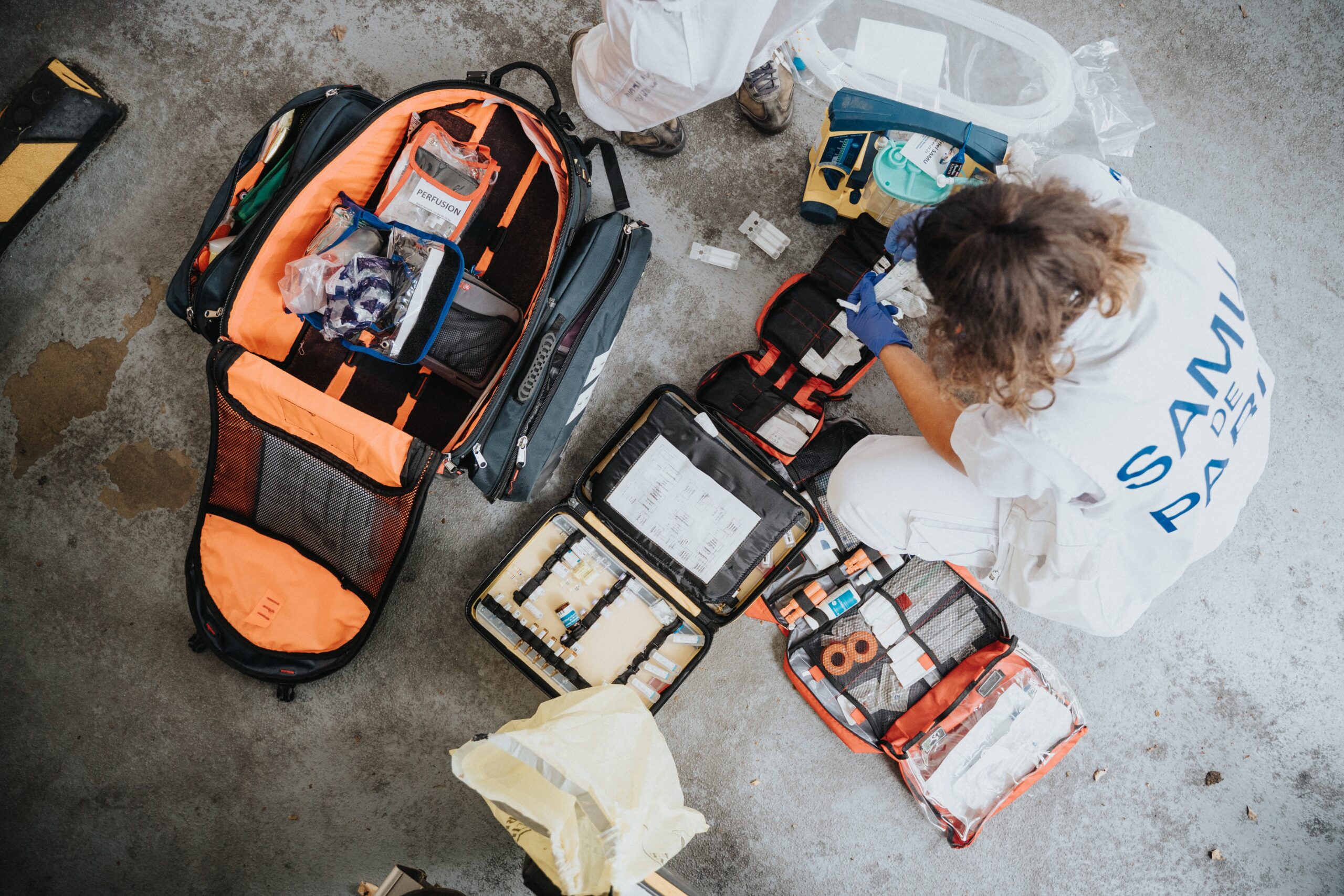First Aid Kits
We would like to emphasize the importance of seeking out and taking advantage of formal and informal training classes. These classes are available for both in person and online formats. Here are a couple of suggestions.
Red Cross First Aid/CPR/AED Classes. These are available both online and in person. For more information go to https://www.redcross.org/take-a-class
STOP THE BLEED Class. This class is available for both online and in person classes. This is a 90 minute class that can easily save a life. For more information go to https://www.stopthebleed.org/
The American Red Cross suggests that a first-aid kit for a family of four include the following items.
- A first-aid guide
- 2 absorbent compress dressings (5 x 9 inches)
- 25 adhesive bandages (assorted sizes)
- 1 adhesive cloth tape (10 yards x 1 inch)
- 5 antibiotic ointment packets
- 5 antiseptic wipe packets
- 2 packets of aspirin (81 mg each)
- 1 emergency blanket
- 1 breathing barrier (with one-way valve)
- 1 instant cold compress
- 2 pair of nonlatex gloves (size: large)
- 2 hydrocortisone ointment packets
- 1 3-inch gauze roll (roller) bandage
- 1 roller bandage (4 inches wide)
- 5 3 x 3-inch sterile gauze pads
- 5 sterile gauze pads (4 x 4 inches)
- A thermometer (non-mercury/non-glass)
- 2 triangular bandages
- Tweezers
Supplement basic items with personal needs and bleeding-control essentials. Things like a commercial tourniquet, bandages, and a felt-tipped pen. Take bleeding-control training to use such and prepare for a bleeding emergency.
Remove, throw away, or use and replace any supplies before they expire. Set a calendar reminder on your smartphone to update the supplies in your kit every six months and/or as the healthcare needs of your family change.
Customize your kit
Think about the healthcare needs of your family when putting together a first-aid kit. For example:
- If you have a family member with a severe allergy, include antihistamine medicine and an epinephrine injector.
- If you have elderly family members with fragile skin, including a roll of paper tape can be useful for protecting delicate skin.
- If you or a family member lives with diabetes, include a juice box, glucose tablets and gels, and an emergency glucagon injection kit.
- Chewable, baby aspirin might help someone who has coronary artery disease, provided the person is not allergic to aspirin.
We also suggest attaching a note to your kit with instructions on where to find other items around the house and how to act in specific emergencies. For example, you can use a note to remind you where sugary drinks and foods are kept in case of a diabetic emergency.
A person who is using a first-aid kit in an emergency might need to call 911 for assistance. Having the home or office address written on the outside of the kit itself can give users a handy location reference for 911 operators.

